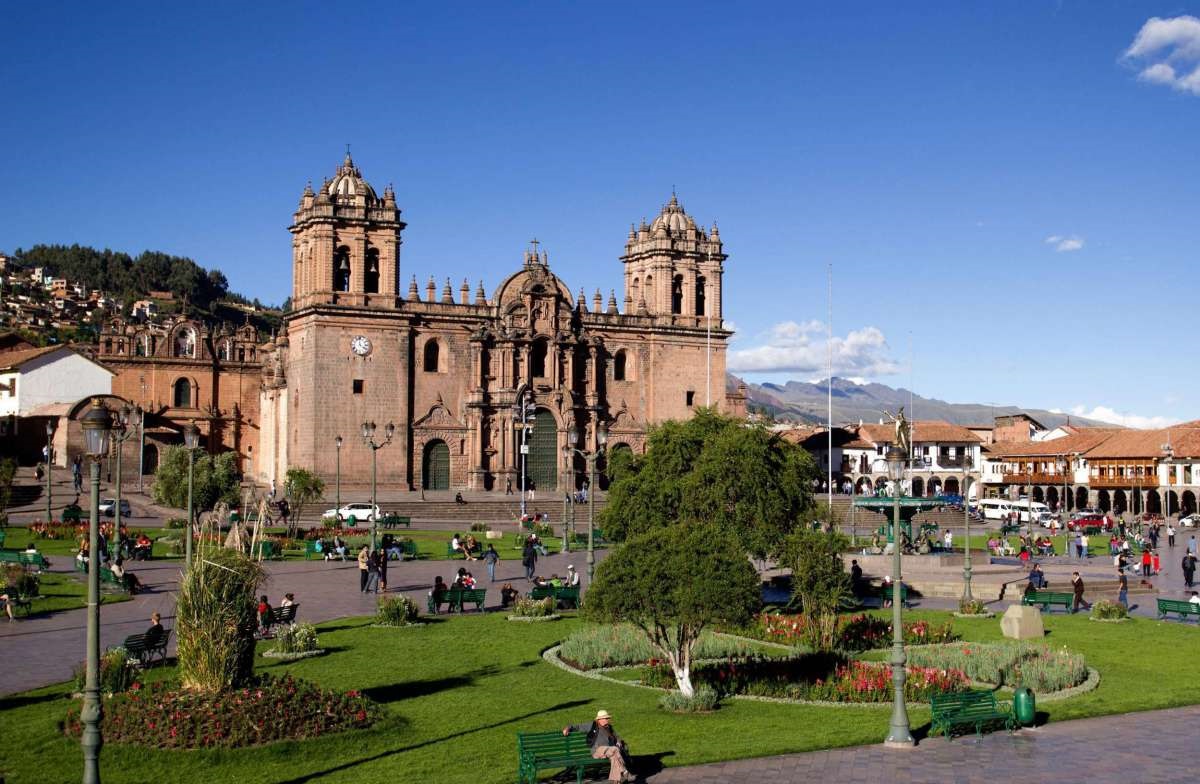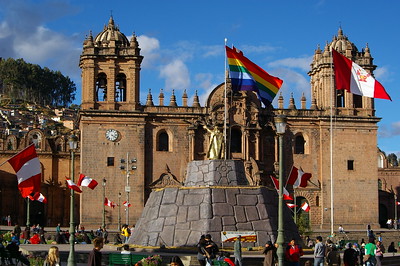This first enclosure to officiate religious acts, was built in what is currently the Church of Triumph on one side of the Cathedral of Cusco. The Spanish conquerors asked for the creation of the Bishopric of Cusco by Fray Vicente Valverde. For 15 years the final location of the Cathedral of Cusco was not determined, because the Cabildo agreed to buy adjoining land, being Canon Don Juan Ruiz the one who acquires the “Kiswarkancha”.
In 1617, the Architect Fray Miguel Huertas intervened, modifying arches and vaults. In 1649, Francisco Domínguez Chávez y Arellano, Master Architect who completed the building, intervenes, he is also the one who builds the facade or master wall.
On August 14, Dr. Pedro de Arteaga y Sotomayor blesses the new Cathedral, opening on August 15 with a party that lasted until September, and on August 19, 1668 it was consecrated by Dr. Bernardo Izaguirre.
The Cathedral of Cusco gathers characteristics of Gothic, Mannerist Renaissance and Baroque. Flanked by two solid towers, its side facades are Mannerist, and the central one, discreetly Baroque.
The Cathedral of Cusco.
It has splendid altars in both Renaissance, Baroque and Neoclassical styles. Its carved wooden pulpit and choir stalls are magnificent works of Cusco crafts.
Also noteworthy is its collection of canvases from the Cusco school with works by Diego Quispe Tito, Basilio Santa Cruz Pumacallo, Basilio Pacheco and Marcos Zapata, creator of a unique “last supper” in which the main dish is roast guinea pig.
Architecture of the Cathedral of Cusco.

Catedral del Cusco 
Catedral del Cusco
Rectangular in shape of the basilica type, the Cathedral of Cusco has three naves: nave of the epistle, nave of the gospel and the central nave, which coincide with the three doors on the façade. It also has fourteen cruciform pillars that define the distribution of the twenty-four entrance vaults and that of the transept.
The High Altar is made entirely of silver, the Sacristy is made up of forty canvases of the Bishops and Archbishops of Cusco. Next to it there are two auxiliary chapels, on the right side the El Triunfo church and on the left the Sagrada Familia.
Other churches surrounding the Cathedral of Cusco.
- Jesus, Mary and Joseph: It is a small temple, its construction began in 1723, however it was ending in the period 1733-1735. It has images of the Sagrada Familia on its main façade and its main altar is made in the Baroque style where the altarpieces and paintings stand out. It was definitively concluded in 1737.
- The triumph: Its name is attributed to themes related to the conquest, it was named as a reminder of the final victory of the Spanish against the troops of Manco Inca where they received the miraculous support of the Virgin and the Apostle Santiago. Built in 1729 – 1733, its main altar is made of finely carved stone and in its main niche you can see the “Cross of the conquest” where the ashes of the Inca Garcilaso de la Vega rest.
Opening hours and Entrance Fee to the Cathedral of Cusco
To enter the Cathedral, you must purchase the Religious Circuit Ticket that includes a entrance fee to the Cathedral of Cusco and other Cusco attractions: The Cathedral, San Blas Temple, Archbishop Museum and San Cristóbal Temple.
The best option is get a tour in Cusco, like the 3 Days Cusco Tour or the 5 Days Cusco Tour.
Schedule
Monday – Sunday from 10 am. at 6 pm.










